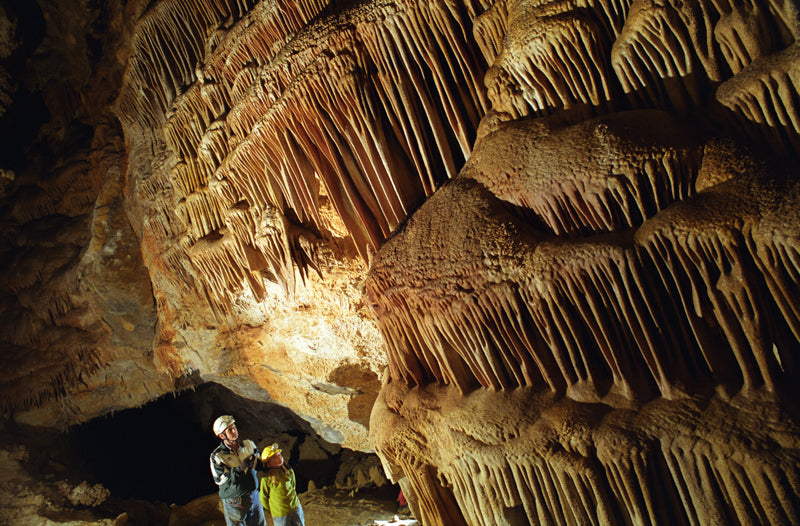My love affair with caving began back in the forests of Iowa in the early 1990's when my family visited Maquoketa Caves State Park. It was there that an insatiable draw toward peering into the unknown and unexplored began to take root. Years later we moved to Utah, and my brother was offered extra credit in his junior high science class if he attended the local caving club. From there it was all downhill and underground. My brother, my father, and myself became very involved in the caving community, cramming a trip in whenever we had a spare moment.
As time went on I began to incorporate my love for photography with my love for underground exploration, which started to open up all sorts of opportunities to join frontier expeditions to places no human has stepped foot. It is interesting how life unfolds as you follow your passion. I never would have imagined that I would be laying the first human footsteps in massive, highly decorated underground chambers.
Originally when I started getting serious about cave photography and was shooting film, I used old flashbulbs purchased on eBay. These old bulbs have a huge guide number and can easily illuminate large chambers. The last few years, however, in order to lighten my pack, I've been using a couple of Vivitar 285s to illuminate small regions of a room, and then later, I'll composite these micro-photos into the final image using Photoshop.
I try and pack as light as possible, since accessing many of the caves I visit requires long, arduous travel. Most cave photographers are real penny pinchers when it comes to gear, for the simple reason that you really beat the crap out of your equipment in ways that no other photographic speciality does. A few years back I had a camera tumble down a 270-foot pit in Mexico as I was crossing a bolt at the top of the pit. Very disheartening.
The biggest obstacle in cave photography is light and elements. Basically you have to light an environment that has zero light while being, in many cases, cold, wet, and dirty. If you or your models sit around very long, hypothermia begins to set in. So most of the shots I take have to be set up and taken fairly quickly. Another challenge that arises in creating good cave photography is composing the shot. Since you can't see anything other than the dim light of your headlamp lighting up portions of the cave, it is sometimes difficult to determine where to best set your camera and your models so that compositionally everything comes together. The solution to these problems is finding cavers who have a higher tolerance for suffering and get excited about creating great cave imagery. We also carry very powerful flashlights with us to illuminate the cave the best we can just so we can get a general idea of the structure of the cave passage.
For me, the best part about cave exploration is the thrill of the unknown—the anticipation of not knowing what is coming up just around the corner. Another part of cave exploration that seems to draw me underground lately is the almost meditative experience of being in a very hostile environment. Letting your mind wander can be particularly hazardous in this type of situation—you either get distracted and make a mistake, or your mind focuses on how far you have left to travel to get out, how deep the pit is, or how cold it is, and pretty soon you end up in a panic. So going into these environments and bringing your mind to focus only on the present moment, the placement of each hand and foot, the experience of traveling through the unknown, the sights, sounds, and smells of the environment you are in, can be strangely calming and relaxing. The ability to free your mind from the worries and cares of the above ground world and just let go.
Photographing caves takes the experience of exploration to an even deeper level of focus and reward. I think the most exciting part of photographing caves is an ability to observe the unobservable, an ability to take the spirit of exploration home with us and continue our discoveries in the comforts of our own homes through the images we've captured. Cave photography allows us to see what we could not otherwise see while we were traveling underground under the dim limitations of our headlamp, and that is very exciting.







